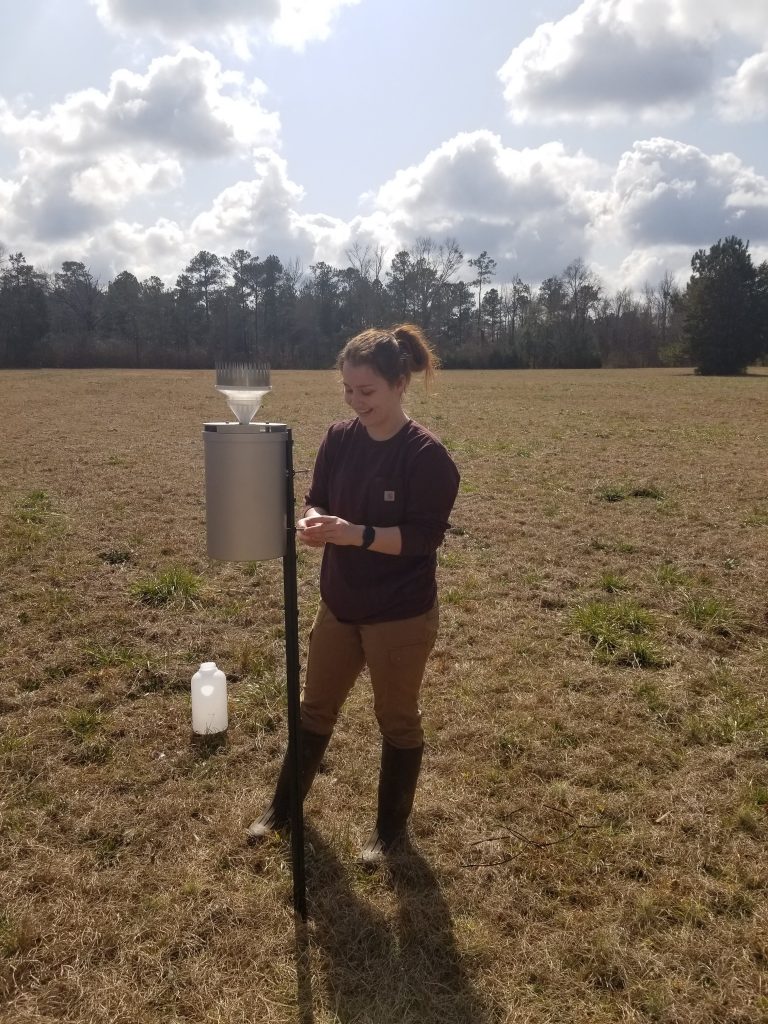Delaney Peterson joined Dr. Nate Jones’ Ecohydrology Lab in the fall of 2020. Before coming to UA, Delaney earned dual degrees in water resources and religion and culture from Virginia Tech. During her undergraduate work she served as captain of the varsity dance team and also conducted undergraduate research on soils at the Hubbard Brook Experimental Forest in Vermont, developing her love of fieldwork.
Despite starting graduate school during the middle of a global pandemic, Delaney has gotten off to a great start here at UA. “I was drawn to UA mostly by the departmental atmosphere—everyone has been so friendly, welcoming, and even willing to help out with my fieldwork. I also wanted to join Dr. Jones’ lab because of the interdisciplinary nature of where we sit; I was really excited by the prospect of doing ecohydrology research in a Biology Department, because the input from collaborators across the discipline would help my research be more well-rounded.”
Her graduate research focuses on non-perennial streams, or streams that go dry on a regular basis. “Here in Alabama,” says Delaney’s mentor Dr. Jones, “over 40% of our streams dry on an annual basis. However, we know very little about how streams dry and how that drying impacts downstream water resources (i.e., drinking water supplies, aquatic habitat, and water quality).” Delaney is beginning to answer these questions at The University of Alabama’s Tanglewood Biological Station (tanglewood.ua.edu). Also known as the Nicholene Bishop Biological Station, Tanglewood is a 570-acre nature reserve and research space located south of Tuscaloosa. This valuable resource offers an area for both faculty research as well as hands-on field experiences in several courses. Specifically, Delaney is using the property to quantify how groundwater interacts with small streams. To do this, she installed 15 groundwater monitoring wells, conducts seasonal stream network surveys, and regularly collects water isotope samples. Delaney’s study is the first of its kind in the upper Coastal Plain, and her findings will directly inform water resource management across the region.
Delany Peterson: “This work is important because it fills a key knowledge gap that will hopefully have a positive impact on water policy and management. We don’t have a great understanding of how water moves through the Upper Coastal Plain (where it’s low-gradient but the soils have a lot of clay) or how that water movement affects stream drying. Hopefully, this research will provide a framework for states like Alabama to better understand their water resources and manage them in a sustainable way.”
Delaney recently decided to switch from a MS degree program to a direct PhD. She will be joining the Aquatic Intermittency effects on Microbiomes (AIMS) project funded by the National Science Foundation, and her research on non-perennial streams will expand to streams across Alabama’s unique geologic gradient (i.e., low-gradient coastal regions to Appalachia). You can follow along with Delaney’s research on twitter—her handle is @thats_me_del_p. She regularly posts research updates with #TanglewoodTuesday and #BamaEcoHydro!
